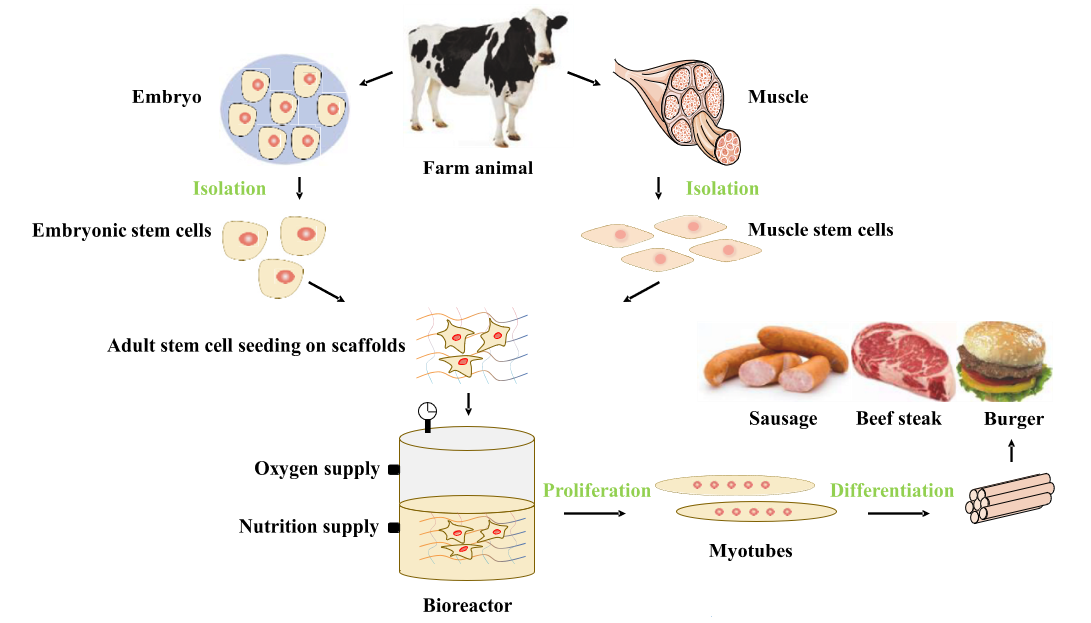NEW TECHNOLOGIES. ARTIFICIAL MEAT AS A NEW SOURCE OF PROTEIN PRODUCTS IN THE NUTRITION OF MODERN PEOPLE
DOI:
https://doi.org/10.15421/jchemtech.v31i3.288736Keywords:
artificial meat, vegetable raw materials, meat substitutes, protein, livestock, cultivation, safetyAbstract
The need for protein raw materials is steadily growing, in accordance with the increase in the population. From time immemorial, meat has been the main component of the human diet, a source of protein and the main energy component necessary for the full functioning of body processes. Artificial meat is a rapidly growing food category that has the potential to change our eating habits. Animal products are replaced by plant-based alternatives that taste and look similar to meat. The goal of such changes is to reduce global dependence on animal agriculture. Currently, there are three categories of artificial meat that differ in technology: cultured meat, modified meat, and plant-based alternative meat substitutes. Meat culture is a complex technology for reproducing the structure of livestock muscles from stem cells, which, in a suitable environment enriched with nutrients, hormones and growth factors, are capable of transformation into muscle and fat cells. Artificial meat production has already faced many hurdles, but it still has a long way to go before it becomes a commercial reality, with societal acceptance, expanded production methods, and lower costs. That is why alternative meat products made from vegetable components are more common on the artificial meat market. As substitutes for animal raw materials, manufacturers use soy, soy isolate, seitan, chickpeas, lentils, peas, algae, insects and other high-protein ingredients. In the near future, the traditional production of meat with the participation of animals is unlikely to be stopped, but the demand between consumers and the range of protein vegetable substitutes is developing rapidly. The food industry faces the task of adapting innovative technologies of artificial meat to the needs of the population, which can provide a significant impetus to the improvement of the ecological situation and the elimination of human nutritional deficits.

Downloads
Published
Issue
Section
License
Copyright (c) 2023 Oles Honchar Dnipro National University

This work is licensed under a Creative Commons Attribution 4.0 International License.
- Authors reserve the right of attribution for the submitted manuscript, while transferring to the Journal the right to publish the article under the Creative Commons Attribution License. This license allows free distribution of the published work under the condition of proper attribution of the original authors and the initial publication source (i.e. the Journal)
- Authors have the right to enter into separate agreements for additional non-exclusive distribution of the work in the form it was published in the Journal (such as publishing the article on the institutional website or as a part of a monograph), provided the original publication in this Journal is properly referenced
- The Journal allows and encourages online publication of the manuscripts (such as on personal web pages), even when such a manuscript is still under editorial consideration, since it allows for a productive scientific discussion and better citation dynamics (see The Effect of Open Access).

